In this Bagan travel guide, we provide you with the necessary information: climate, best sites, and activities to do, etc. Follow these important Bagan travel guides to ensure you have a perfect trip to this ancient city!
General Information
The Bagan Ancient City, located in Mandalay, is about 600 km from Yangon and has been the capital of Myanmar for 230 years. Despite its small area, Bagan is home to many temple ruins. According to experts, this city has 3,500 pagodas, temples, and other constructions built from the 11th to 13th centuries. The capital Bagan is listed as a UNESCO World Heritage Site in 2019. Here, in addition to visiting ancient temples, you can join the experience of flying on a balloon, exploring the Popa Volcano, etc. The profile that the ancient city has left behind makes Bagan the subject of many mysterious rumors, that Bagan becomes attractive to tourists when they decide to visit Myanmar.
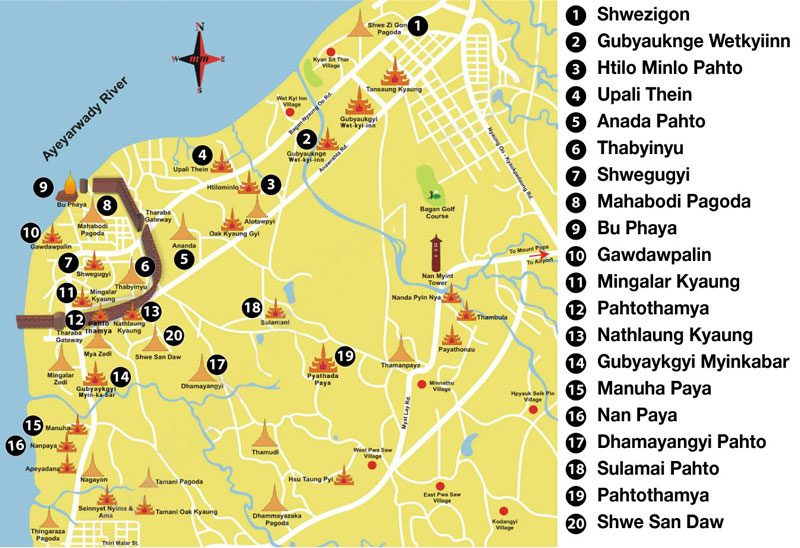
Panoramic view of Bagan
Climate and the best period to visit Bagan
Bagan experiences a hot climate all year with 3 distinct seasons: hot, rainy, and cool.
- Hot season (March – June): The sun is strong with high temperatures that give a feeling of heat. The weather in Bagan in this season is often rainless or very little.
- Rainy season (July – September): This is the only time it rains in Bagan, but not too often.
- Cool season (November – February): The weather is very mild, cool, less rainy, and above all not hot for tourists to relax.
It is perfect to visit Bagan between November and February when the temperature is around 30°C (86°F). This is also the best time to visit as the weather is not too hot and dry. November to February is also the peak tourist season and the only time you can have the unforgettable experience of a hot air balloon ride over Bagan. If you want to participate in the local festival, do not forget to visit Bagan during the full moon.
Otherwise, you should avoid visiting Bagan from March to May because these are the hottest months when the temperature can reach 43°C (110°F). June to October is also not the best time to visit Bagan due to the rains, which can interrupt your trip and prevent you from enjoying the beautiful scenery.
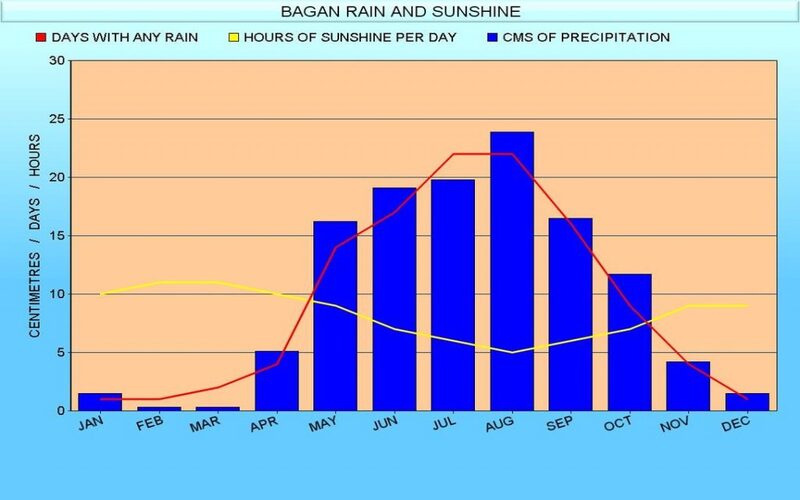
The climate of Bagan Myanmar
Getting to Bagan
Nyaung U is the main entry spot to Bagan which has a train station, a pier, and an airport.
By plane
There are daily direct flights to and from Yangon, Mandalay, and Heho (Inle Lake). Domestic flights usually cost around $100. Nyaung U airport is about 4 km southeast of Bagan and it takes about 15–20 minutes by car to reach Nyuang U Town. The taxi ride from the airport to Nyaung U costs about 5,000 kyats, even more if you have to go to New Bagan or Old Bagan.
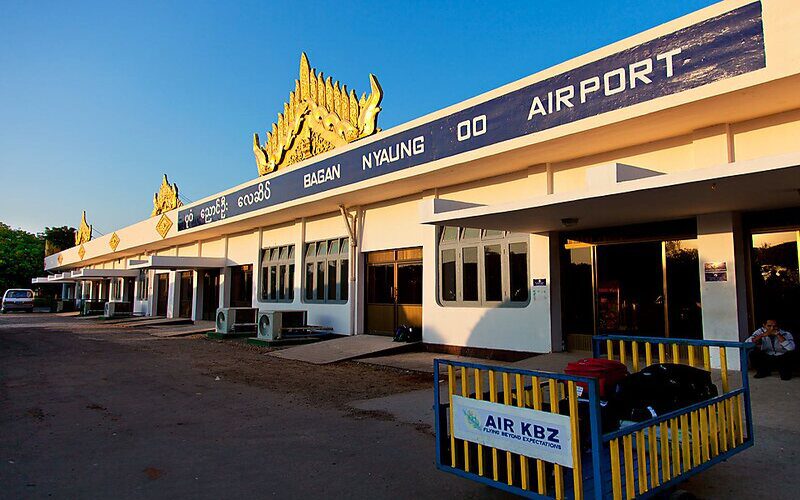
Nyuang U Airport
By bus
Bagan is accessible by bus to all major destinations in Myanmar. There are daily direct day and night buses to and from Yangon (10 hours), Nyaung Shwe near Inle Lake (8 hours), and Mandalay (5 hours). We recommend booking one of the comfortable VIP buses available on all major routes. These buses are very comfortable, with two seats on one side and only one on the other. And they usually only cost a few euros more than other buses.
By train
For adventure seekers, you can get to Bagan by train. There are daily connections to and from Mandalay and Yangon. Night trains leave Yangon around 16h and arrive the next day at 9h. The price varies from a few dollars in second class to 50 USD in “luxury” class. There is a direct train from Mandalay with two departures per day. Tickets are available directly at the station and cost around 6 USD each way. The trip takes about 7 hours.
By boat
With its large number of rivers, the boat is a very popular type of transport in Burma and allows you to discover the nature and the life of the Burmese. You can buy a ticket from your hotel or a travel agency.
There are two categories of boats to access Bagan: slow and express. The daily express ferry sails the Irrawaddy from Mandalay to Bagan and takes around 5 hours. The price is $25. The slow ferry does the same route and costs only $10. It takes between 14 and 17 hours, but it is a good opportunity to meet Burmese people. Plastic chairs are available for hire on board, otherwise, bring something to sit on and cover yourself in case of cold weather (the boat leaves at 5h).
There are three private operators that handle trips to Mandalay: Myanmar Golden River Group (MGRG), N Mai Hka, and Malikha 2.
Getting around Bagan City
The vast expanse of Bagan does not allow tourists to explore this place on foot. To get around, there are four available alternatives available for you:
By bike
Renting a bike is very popular in Bagan. It’s also the cheapest mean of transport in this city. Convenient for athletes, renting a bike allows you to pedal to every corner of the site, and to go from this sanctuary to another sanctuary to contemplate the beauty of the temples. Also, an electric bike is a better option. Less tiring and faster, the electric bike allows you to visit the whole city and all the temples of the site in a few hours. However, the rental cost is higher than for a classic bike. This is the most common type of transport in Bagan, remember to recharge your batteries before leaving so as not to break down and find yourself having to pedal hard.
By carriage
There is nothing better than taking a tour of Bagan in a horse-drawn carriage sheltered from the sun. You will be driven by a driver-guide who will tell you the history of the monuments in Bagan. To try absolutely for an unusual visit!
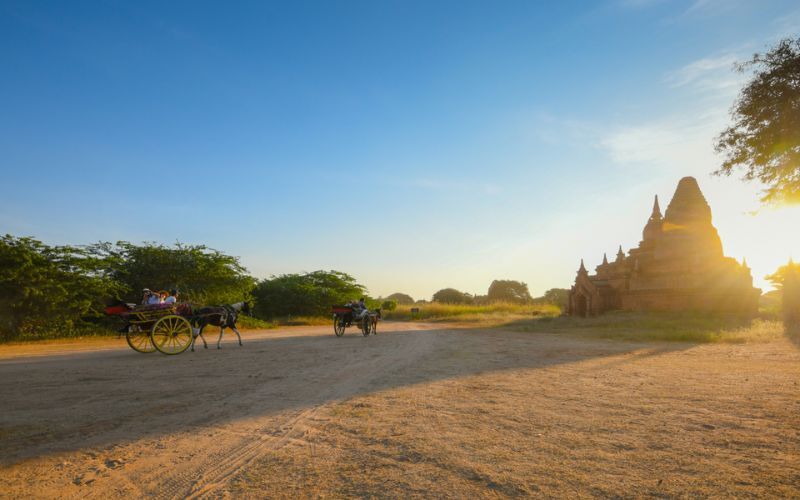
Getting around Bagan by carriage
By taxi
Taxis in Bagan are quite affordable. And they will allow you to travel to other distant destinations.
By private car
The car rental will be the best option if you choose to travel as a group. Alternatively, you can use our transfer service from the airport to the hotel and vice versa. Contact us for more details.
Accommodation in Bagan
Bagan is divided into 3 principal zones: New Bagan, Old Bagan and Nyaung U. Most temples are located around Nyaung U and the bus station is nearby. Nyaang U is also the best place for meals and room prices are relatively reasonable. Old Bagan is a bit more exclusive. Some pagodas are even within walking distance, and there are some very good hotels there. But you will also have to dig a little deeper into your pockets if you want to stay there. New Bagan is much cheaper than rooms in Nyaung U, but it lacks charm and is far from most temples.
Some hotels to reference:
- Bagan Shrine Thiripyitsaya Resort
- Hotel Bagan Thande Hotel
- Bagan Lodge
- The Hotel @ Tharabar Gate
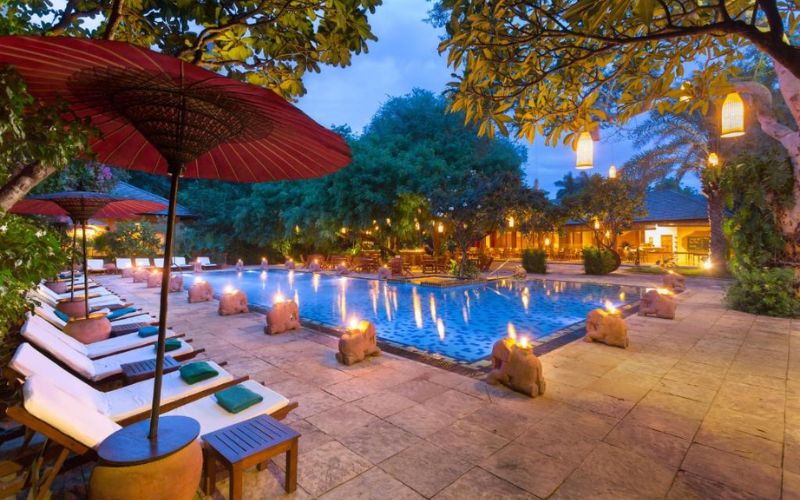
The Hotel @ Tharabar Gate
You need to book in advance before traveling to avoid a shortage of rooms and high prices.
Best places to visit in Bagan City
Bagan is one of the busiest cities in Myanmar which offers you numerous attractive temples and pagodas. During a visit to this sacred land, you will have a chance to discover the hidden history as well as the spiritual and cultural aspects not only of Bagan but also of the whole country. Here are some places that you must try during your trip to Bagan:
Ananda Temple
The Ananda Temple is a long-standing religious monument. It is also renowned as one of the finest, largest, best preserved, and most revered temples in Bagan. It is an indispensable symbol of tourism in Bagan.
Ananda Pahto was built around 1090 during the reign of King Kyanzittha and was restored in 1975 after an earthquake. This temple is 170 feet tall and is considered one of the best-preserved ancient temples in Bagan. Inside the Ananda Temple, there are four Buddha statues over 13 meters high installed in the state of Nirvana, each facing a different direction: Kakusandha Buddha to the north, Kassapa Buddha to the south, Konagamana Buddha to the east and Gautama Buddha to the west.
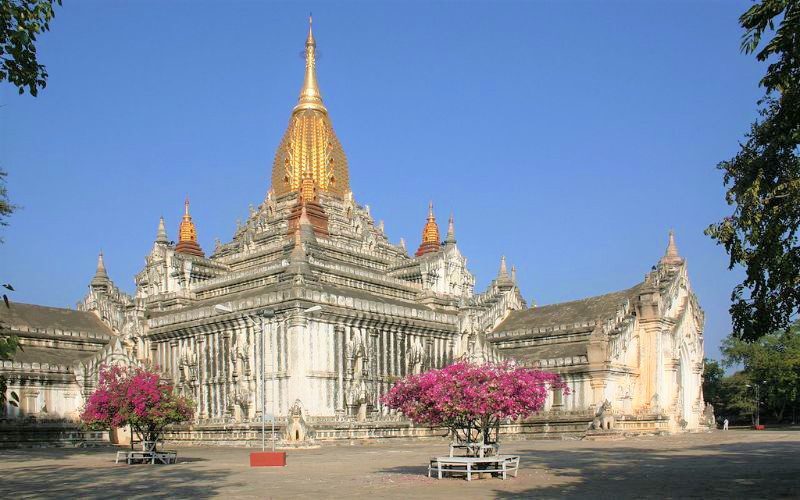
Ananda Temple
Thatbyinnyu Temple
Thatbyinnyu Temple, with its height of 65 meters, is the tallest building in Bagan. It was erected by King Alaungsithu in 1144 and served as the model for most of the great temples in Bagan. To see the magnificent vaulted room on the first floor, where there is a large statue of the seated Buddha.
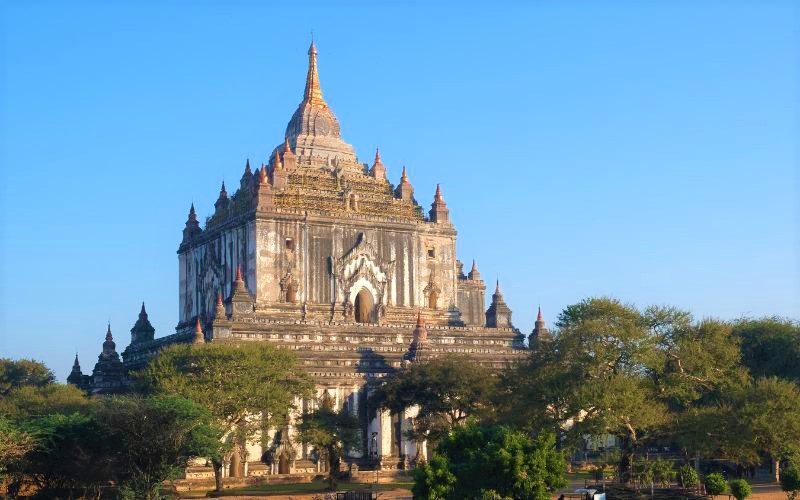
Thatbyinnyu Temple
Sulamani Temple
Sulamani Temple, also known as “Crown Jewel” or “Little Ruby”, was built in 1181 by King Narapatisithu. King Narapatisithu had found a little ruby on the ground (which later became part of this temple), this is the origin of the name “Little Ruby”. The temple also has a pyramidal structure, with splendid architecture and ornaments.
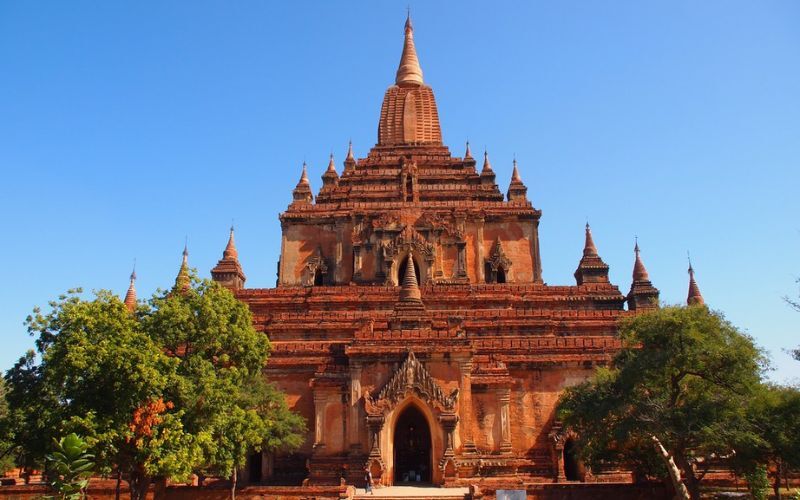
Sulamani Temple
Dhammayangyi Temple
Dhammayangyi Temple is considered one of the four greatest monuments in Bagan, along with Shwezigon Pagoda, Ananda Temple and Thatbyinnyu Temple. This colossal temple was built by King Alaungsithu in the 12th century. Its roof, made up of seven successive terraces, is a real architectural marvel and we appreciate its stunning reclining Buddha inside.
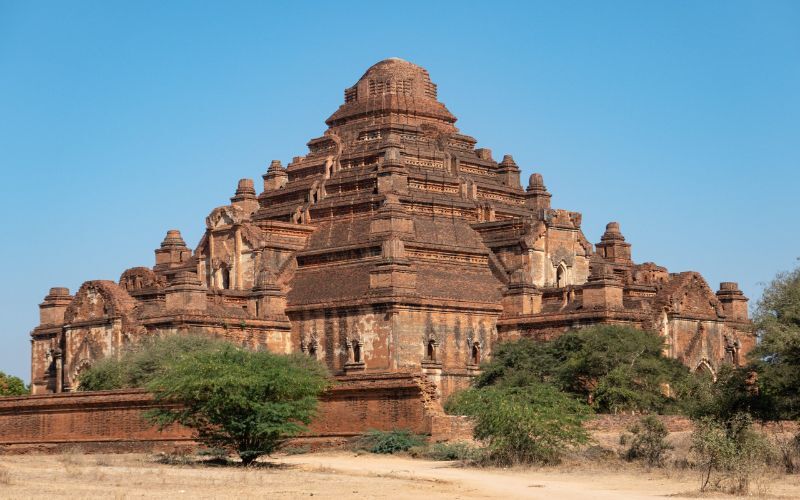
Dhammayangyi Temple
Gawdawpalin Temple
Gawdawpalin Pahto is one of the biggest temples in Bagan. It was first built by King Narapatisithu and later by his successor, King Htilominlo. It is a two-story temple with a height of 55 meters. Gawdawpalin Temple has a truly inspiring story. It is said that during the reign of King Narapatisithu, the king’s pride was so great that he did not recognize his own weaknesses. He thought he had more power and accomplishments than his ancestors, even surpassing them.
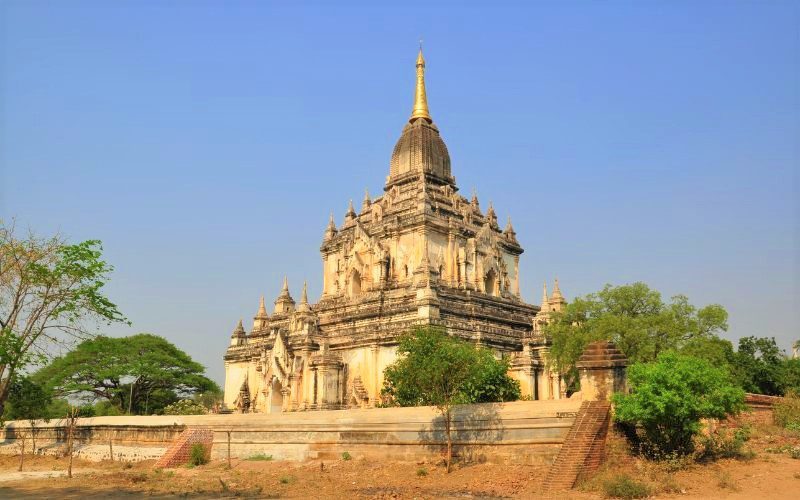
Gawdawpalin Temple
Htilominlo Temple
Built-in 1218 with a height of 45 meters during the reign of King Htilominlo, Htilominlo is known as the last Burmese-style temple in Bagan. This beautiful temple also has other names like Zeya Theinkha or Nadaungmyar. Located about 1.5 km to the south, Htilominlo is best known as an iconic temple in Myanmar.
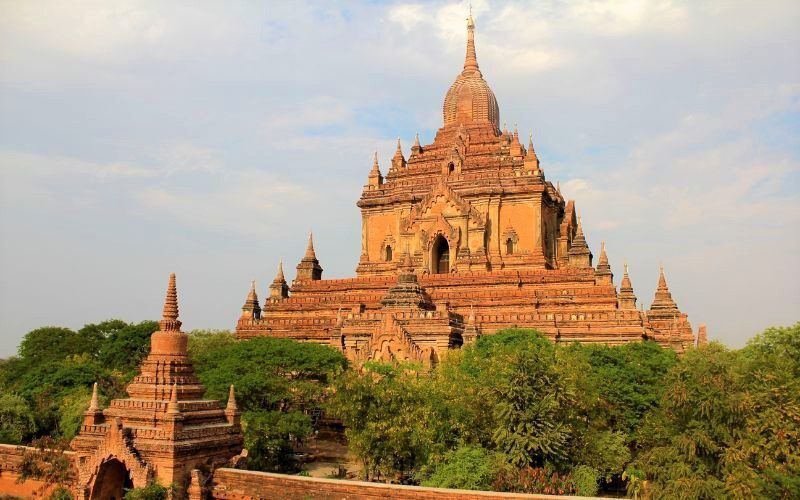
Htilominlo Temple
Shwesandaw Paya Pagoda
Shwesandaw Pagoda is a spectacular pagoda in the northeast of Old Bagan. For those who wish to explore ancient structures, this site is not to be missed. Shwesandaw Paya Pagoda, built in 1057 by King Anawrahta, the founder of the Kingdom of Bagan has a somewhat similar shape to the pyramid with a bell-shaped like a “stupa”. It is recommended to go there early in the morning because this destination has one of the best viewpoints in Bagan, which is very excellent for photography.
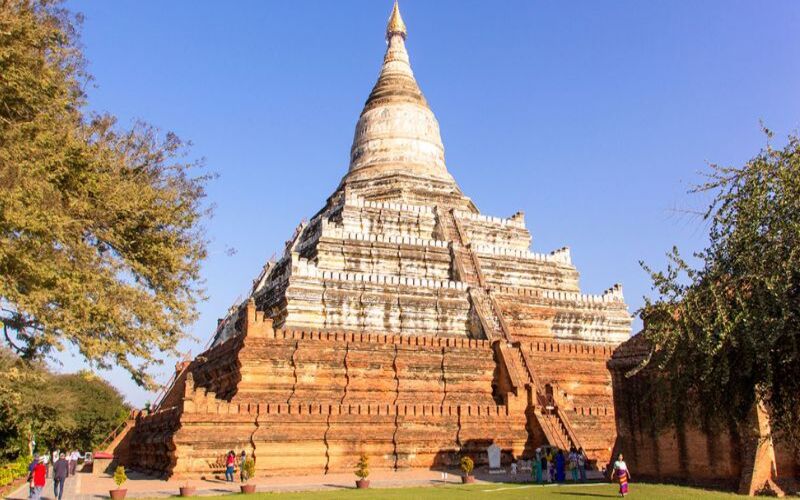
Shwesandaw Paya Pagoda
Shwezigon Paya Pagoda
Shwezigon Pagoda, built by King Anawratha in the middle of the 11th century, is famous for its 37 statues of pre-Nat Buddhism. Shwezigon Pagoda served as a style for other numerous stupas of Burmese style.
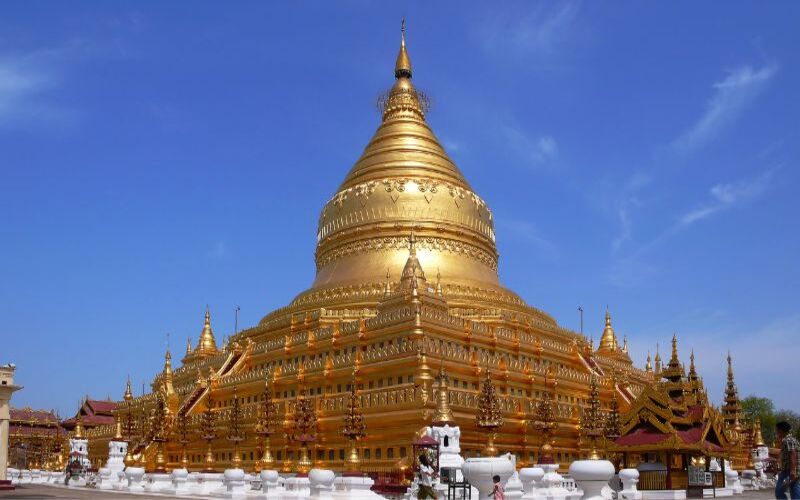
Shwezigon Paya Pagoda
Bagan Archaeological Museum
A visit to the Archaeological Museum (9 a.m.-4.30 p.m. except for Mondays) is particularly recommended to better understand Bagan, as it makes up for the lack of noticeable decorations and explanatory panels at the sites. Its monumental-traditional style – vast central room with a richly worked ceiling, a panorama of biblical dimension – offers exhibitions a dignified setting, etc.
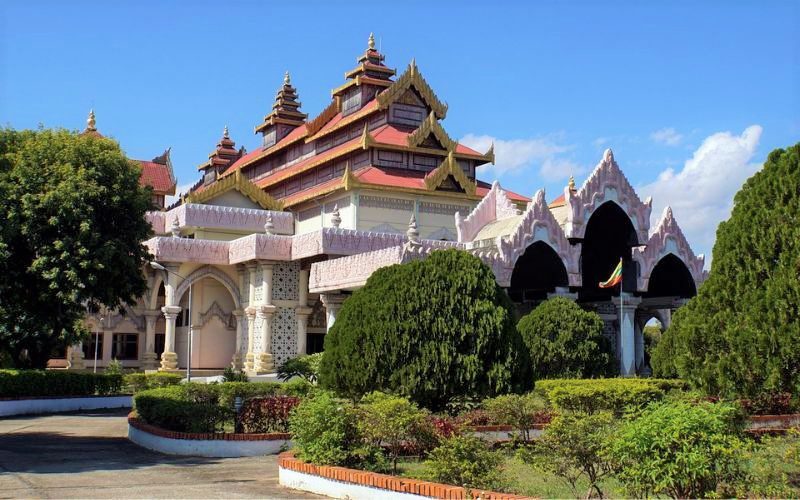
Bagan Archaeological Museum
Seinnyet Nyima Paya Pagoda and Seinnyet Ama Pahto Temple
In an area further away from the main temples are Seinnyet Ama Temple and Seinnyet Nyima Pagoda, also known as the sister temples of Seinnyet. Located on a small hill a few kilometers south of Old Bagan, the two monuments form a single complex, surrounded by a low brick wall.
The temple and the pagoda were built in the 12th century by Queen Seinnyet and her sister. Seinnyet Ama, which means older sister, is a Gu Phaya and Seinnyet Nyima, which means younger sister, is a Pahto.
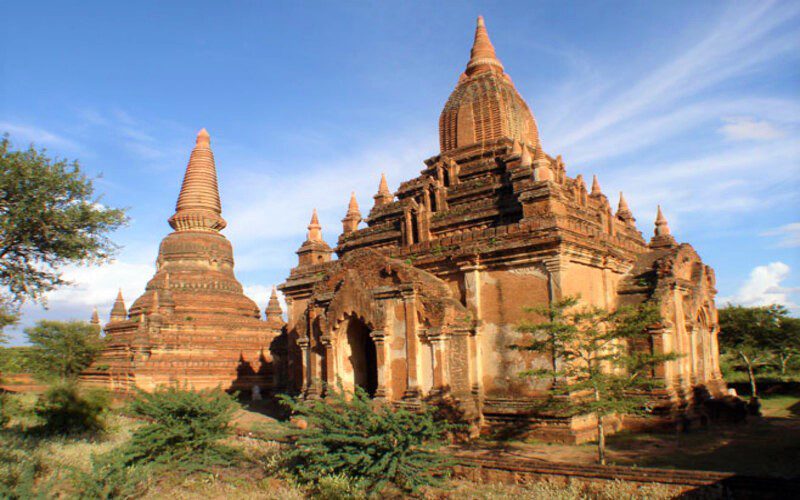
Seinnyet Nyima and Seinnyet Ama Paya Bagan
Activities must-try in Bagan
Bagan once the capital of Burma’s most flourishing kingdom during the 11-13th centuries, is the first place where warlords united, becoming an integral part of Myanmar as it is today. More than 14,000 terracotta temples collapsed after historical events and the 1975 earthquake. Here are the most interesting activities for your trip to Bagan:
Explore The Ancient City by Hot-Air Balloon
A peculiarity of this ancient city when talking about hot air balloons is that they are also considered a type of transport. The price of a hot air balloon trip is quite expensive, but you should once experience and see the whole of Bagan from above. You will be able to admire a strange old town with desert expanses, and horse carts crossing the roads. The chain of temples and pagodas have sprung up and covered the ancient city of Bagan, so only discovery by hot air balloon allows visitors to see all its temples.
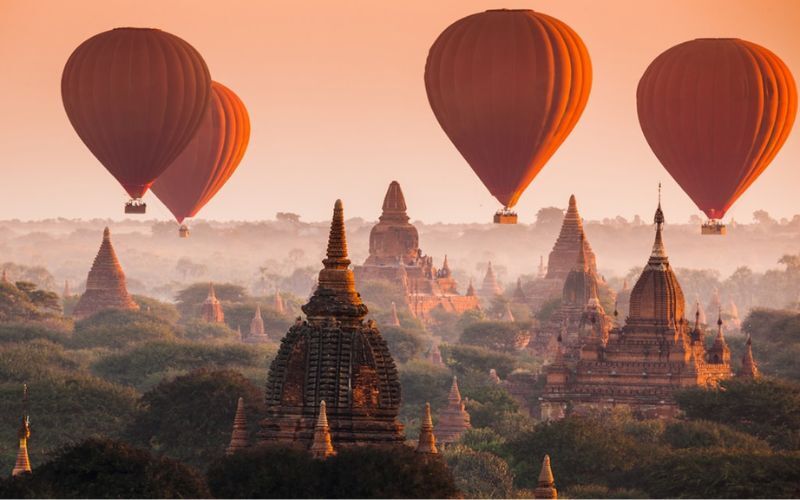
Explore Bagan Ancient City by Hot-Air Balloon
Watch sunrise and sunset
Watching the sunrise or sunset from a temple is one of the most popular activities in Bagan. Unfortunately, it is sometimes the favorite for the main monuments. Do not hesitate to choose a more modest temple, located on the axis of the sun, to contemplate the spectacle in peace.
Visit the temples of Bagan – mysterious and ancient
No traveler visits Bagan without visiting its temples and as already mentioned, the architecture of the temples and pagodas in this ancient city was built in an old-fashioned way, retaining the ancient features. Note that in Myanmar, before entering the temples, everyone must remove their shoes, slippers, and socks and leave them outside.
Enjoy the typical local gastronomy
Before leaving Bagan to travel to other parts of Myanmar, be sure to taste a Burmese-style dinner with full savory dishes like pork stew, chicken curry, fried fish, beans, and broccoli, served with a salad of mangoes and chopped vegetables and also the dessert combined with three ingredients: tea leaves, mango fibers, and beans.
Must-eat Foods in Bagan
Tea leaves salad
Fermented tea leaves are a national dish and play an important role in Myanmar cuisine. This dish is also called with the name “Lahpet Thoke”, “Lahpet” in Burmese meaning green tea, and “thoke” meaning salad. To prepare this delicious salad, locals choose the best tea leaves and ferment them. Then those tea leaves are dipped in sesame oil and then mixed with fried garlic, peas, peanuts, toasted sesame, crushed dried shrimp, chopped ginger, and chopped coconut.
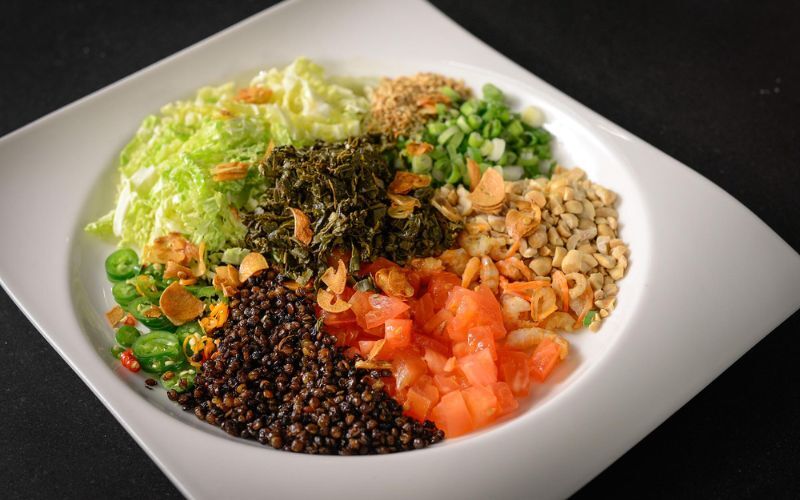
Tea leaves salad
Shan noodles
Noodles are very popular in Bagan, there are many kinds of noodles here, such as Shan tofu noodles, Nangyi thoke noodles, Mohinga and Shan noodles, etc. Shan noodles are the most unique and traditional dish of the Shan tribe in Myanmar. The main ingredient in this dish is tofu, but unlike other countries, it’s not made from soy. Shan tofu is a thick soup made from yellow lentils and chickpeas. This yellow soup is sprinkled on noodles, add chicken or pork, and a little satay. This dish is served with pickled vegetables and broth.

Shan noodles
Sticky rice
Sticky rice is a regular dish in almost regions of Myanmar, Bagan is no exception. Bagan sticky rice will be mixed with various seasonings and then served with dried meat or shrimp paste. Sticky rice has a very fragrant taste. The price of this dish is around 500 kyat.
The city of temples is an essential waypoint during a trip to Myanmar. Please contact us if you want more information or to organize your trip to Burma.